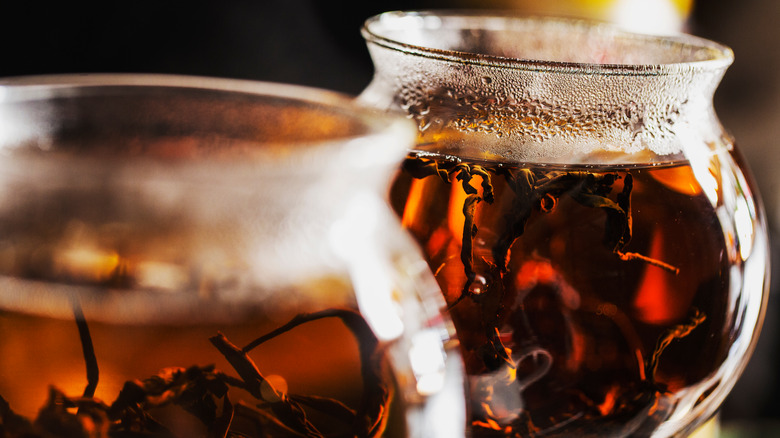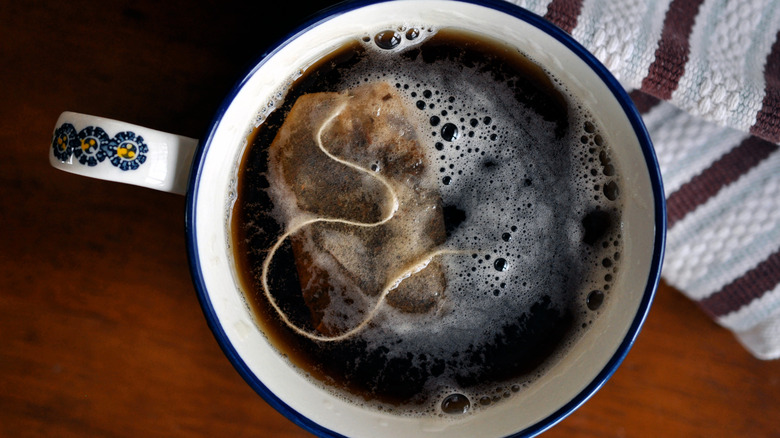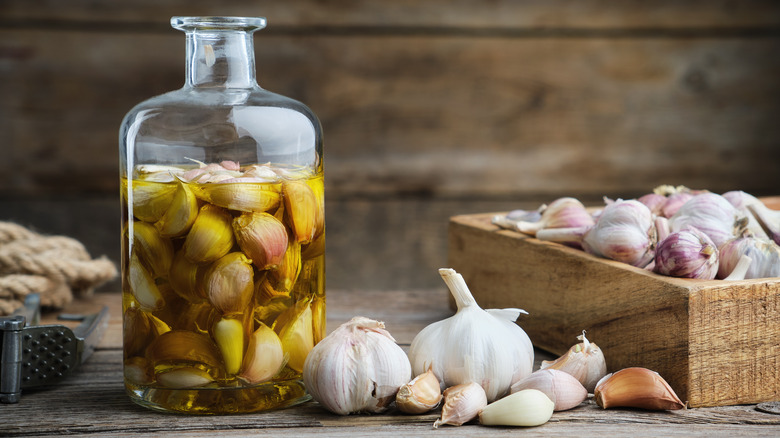Steeping Vs. Infusing: What's The Difference?
At first glance — or perhaps first taste — steeping and infusing are seemingly interchangeable processes that yield equally delicious outputs. Commonly associated with tea, these popular mechanisms for enhancing flavor offer an herbal twist to standard water. They can transform even the most neutral of liquids into a flavorful drink.
Yet the possibilities for steeping and infusing go way beyond the mug. For a unique, savory drizzle, try infusing olive oil with your favorite herbs, or, for a funky breakfast, circle back to steeped tea for an oatmeal base. The processes generally refer to the act of adding flavor to a liquid, so with such a loose definition, the possibilities are endless — and certain to coax out plenty of creative combinations.
According to America's Test Kitchen, however, steeping and infusing ultimately represent two separate stages of the flavoring process. While they blend into similar products, the two approaches play complementary roles.
Steeping starts off any infusion
The variations between steeping and infusing boil down to timing temperature. Per America's Test Kitchen, steeping refers to the act of soaking an ingredient in what is typically hot liquid. During the steeping process, the chosen ingredient remains submerged in the liquid for a set amount of time. Heat typically helps extract the maximum amount of flavor.
Inserting a tea bag into a steaming cup of water is perhaps the simplest example of steeping. Per Healthline, steeping is essentially the step en route to a brewed cup of tea, in which you pull out the maximum flavor. Depending on the kind of tea you're making, however, water temperature — as well as steeping time — varies. Generally, you'll want hot water, especially if you're pressed for time — the hotter the water, the faster the steeping ... and the stronger the tea.
Beyond tea, you can also steep thyme in gin or experiment with a slew of other ingredients. Some of these call for heating your liquid, while others don't. All eventually end up with an infusion — the goal of any steeping expenditure.
After steeping, you're left with an infused liquid
According to The Spruce Eats, steeping is the waiting period of placing an ingredient into a liquid. Once the ingredient steeps to your desired intensity, you can remove it from the liquid. The byproduct is the infusion: flavored water, oil, alcohol, or syrup. Basically, steeping is a specific step in infusing a liquid.
In fact, most liquids can become infusions, though you'll want to strategize in pairing flavor to vessel (via Fine Cooking). Before steeping, research complementary duos. Basil, for instance, pairs well with oil but not water. Meanwhile, mint works exceptionally well in water. There's a reason mint tea is so popular.
Because select ingredients cater to certain liquids better than others, you should put in some legwork before beginning to steep. Otherwise, you're wasting your time; there's no point attempting to infuse a liquid with an ingredient that won't fulfill its flavor potential.
As for timing, you generally want to consume your infusion sooner rather than later, especially when using fresh ingredients. According to Masterclass, Yotam Ottolenghi's garlic confit can last up to several weeks, though Ottolenghi chooses not to strain the garlic from the oil infusion. To air on the side of caution, experiment with dishes that call for infused oils immediately after they finish steeping. What better way to see — than taste — steeping and infusing in action?


